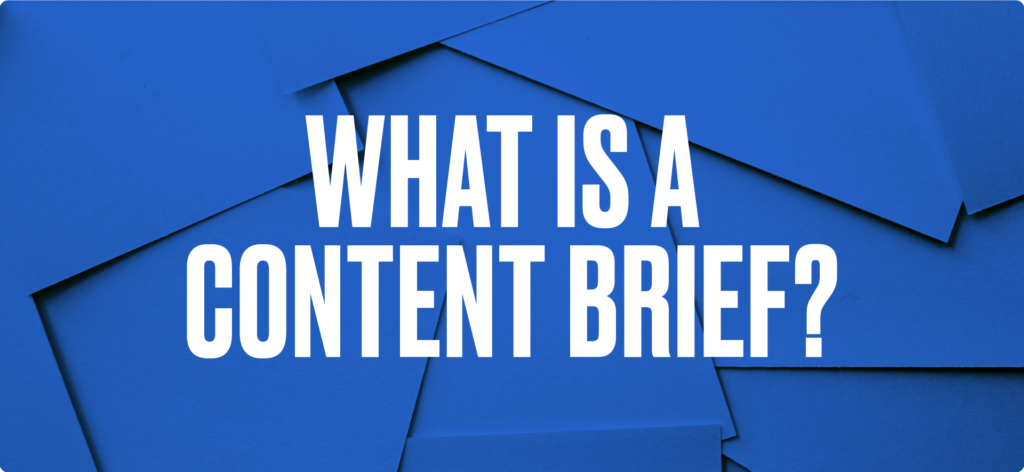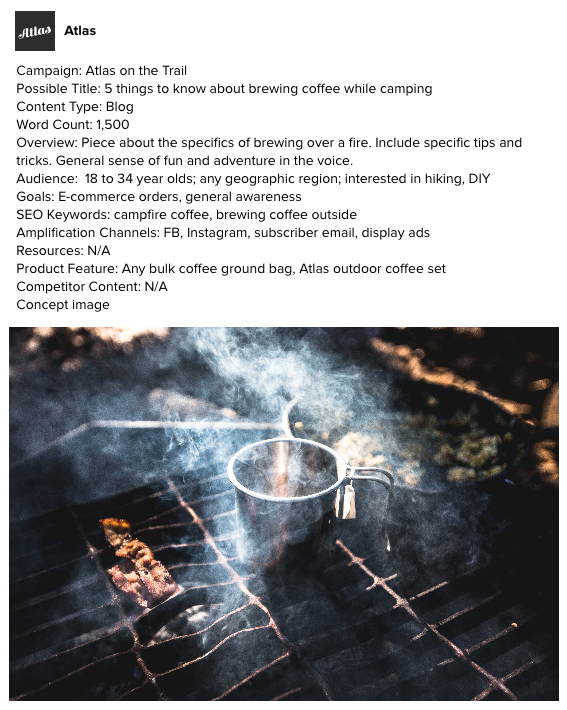by Lee Dussinger
Great written content is crucial to the success of marketing. Long-form or short-form, the written word is extremely effective at conveying your brand story and giving detailed information. Whether it’s a blog, case study, white paper, email, social media post, video script, or anything else – written content marketing is still a cornerstone in 2023. Since good content begins with good briefs, knowing how to write a content brief is an essential skill for anyone working with or managing a marketing team.
The right content brief gives the writer the instructions, some context around the piece, and a dose of inspiration. By equipping your content professional with a content creation brief, you empower them to make the best piece of content. We’re exploring how to write a content brief that empowers your writer to create the best asset, both quicker and without headaches.
What Is a Content Brief?

Essentially, a content brief is a document that assigns work to a writer – and gives them the complete information to create it. A type of marketing campaign brief, it is specialized for long-form written content.
Whether your content is written by an in-house team, a formal content agency, or by a freelancer – writing a content brief is essential. A brief is the only central document a professional writer should need to create a polished final product. While the exact specifics of a brief document will likely be somewhat tailored to your organization, great briefs tend to have the same basic information.
Seeing a good brief example is one of the best ways to learn how to write one…
Content Brief Example From Atlas Coffee
In order for a brief to be the one-stop-shop document for creating a full content piece, it must cover essentially everything needed to create the finished content. Here’s a content brief example built in Opal for the (fictional) brand Atlas Coffee.

Let’s talk about this example in greater detail. Here are the essential elements of a brief and why they matter…
Campaign – Listing the big-picture campaign in the brief can help your writer understand the wider context of their assignment. Knowing what other content is going to market and the big picture goals can inform how your writer crafts their piece.
Possible Title – No question that content writers are creative people, but giving them a potential title can be a big help. This suggestion can help them understand the intent behind what they’re writing and how you want it to be received. Plus, the right sample title can be the perfect jumping off point.
Content Type – You can’t have a content creation brief without this. There are enormous differences between how professionals approach writing a blog, a white paper, or a landing page.
Word Count – For some types of content, word count is highly relevant. Knowing a minimum or maximum word count can help your writer decide where to put focus and how much time to take with specific sections.
Overview – This is a sentence or two that gives the writer an idea of what the piece should be about and what you want the focus to be. As you develop a working relationship with your content team, you’ll likely start to learn the info they prefer to get in an overview.
Audience – Knowing the intended audience of readers will help the writer make decisions about the piece they are crafting. From a language perspective, they’ll understand what style of language to use and what references to make. From a bigger picture point of view, the identity of the audience can guide what concrete ideas and information your writer gives.
Goals – Goals can range from general – like brand awareness – to very specific, such as e-commerce sales of a specific product. When you’re explicit about what you want the content to accomplish, you empower the writer to hit the mark.
SEO Keywords – When writing a content brief for a piece of SEO content, you need to include the keywords for which you want the piece to rank. Whether your content writer will be the one applying the SEO strategy during the writing process, or a separate SEO team will modify the asset, including this with the brief is essential.
Amplification Channels (If Applicable) – Longer form pieces of content like blogs and webpages are often at the center of outreach efforts, including social, paid, and many others. Including this information ahead of time can ensure the writer understands exactly how their content piece will be utilized.
Resources – If there are any important documents to help with writing the content, link them here. This can include anything from technical product specs, to lists of quotes and testimonials, or any other piece of helpful information.
Product Feature – While it is not an element of every brief, this can be essential. If you want to have a piece of content to feature specific products, include them here. While this often looks like physical products – it can be any element of your offering that you want to spotlight in content.
Competitor Content – If the content is similar to a piece a competitor made, linking it in the brief can be very helpful. Seeing what a competitor did well can guide your work, and it can also ensure you write differently enough from their content.
Concept Image(s) – While you don’t need to include one to write a content brief, providing a visual adds that little extra bit of inspiration to put the writer in the correct mindset. The concept image or images can also be embedded in their content as well.
The Impact of Good Content Creation Briefs
Knowing how to write effective content briefs improves the working experience for the writer and the assigner – as well as leads to more impactful content in less time.
For the writer, receiving a complete brief with an assignment ensures they can get an effective start on the writing process. This can cut needless back-and-forth communication as well as some information gathering. In addition, a fully-developed brief enables them to understand the “why” of their content and how it fits within the bigger marketing picture. Ultimately, your content team will appreciate receiving detailed briefs, as they enable the team to work quicker and produce higher quality content immediately.
Read our case study to understand how upgraded briefing helps Microsoft create content 67% faster!
For those assigning the briefs, spending more time preparing a brief means fewer revisions and stronger overall content. By giving extra context and resources up front, you are investing time to get a superior product back with less effort. This holds especially true when working with external teams or freelancers that will have less context of your company’s marketing strategy.
So here’s a question: does EVERY piece of content need a brief?
No. Some assignments are extremely simple and straightforward. In addition, some formats of written content don’t have the same level of nuance to require a brief. Briefs are simply a tool to help you and your team successfully create written content.
The Benefit of Planning & Briefing in Opal

As a content operations platform, Opal is the space where our customers plan, create, and calendar their content. While content briefs can be as simple as a Google doc you send to the writer, many marketers find that more formal briefs (that are stored publicly) prove more effective.
Here’s how marketing teams get value from writing content briefs and other plans in Opal:
Dedicated Space for Briefing – Opal provides a free-form space that’s specifically designed for writing briefs: Boards. By briefing in Opal, your team sees the whole plan from the very beginning, leading to stronger ideas, more visibility of the plan, and all-around better execution. Opal’s briefing space is also empowered with an AI brainstorming co-pilot, ready to provide you ideas and inspiration to kickstart your marketing.
Collaboration – Collaborating with stakeholders or team members can sometimes be crucial to writing an effective brief for content. Opal enables bringing the team together to write an important brief – as well as to review the final copy.
The Brief Lives alongside the Work – When you write and store your briefs in Opal, the content brief can live alongside the rest of the marketing plans. This provides added visibility about what content is being created and how it factors into the campaign as a whole.
Explore the Opal Platform
Opal is a comprehensive planning platform that caters to the unique needs of marketers. Trusted by leading brands like Target, Starbucks, GM, and countless others, Opal empowers the best marketers in the world to tell their brand stories.
Built for all types of marketing content creation, Opal provides a variety of unique solutions for planning, creating, and calendaring marketing assets.
If you’re interested in exploring, you can request a custom demo. During the demo, a product expert will guide you through the capabilities of Opal, with a focus on addressing your specific marketing needs.
Of course, if you’d prefer a hands-on approach, you can start a free trial right here!


